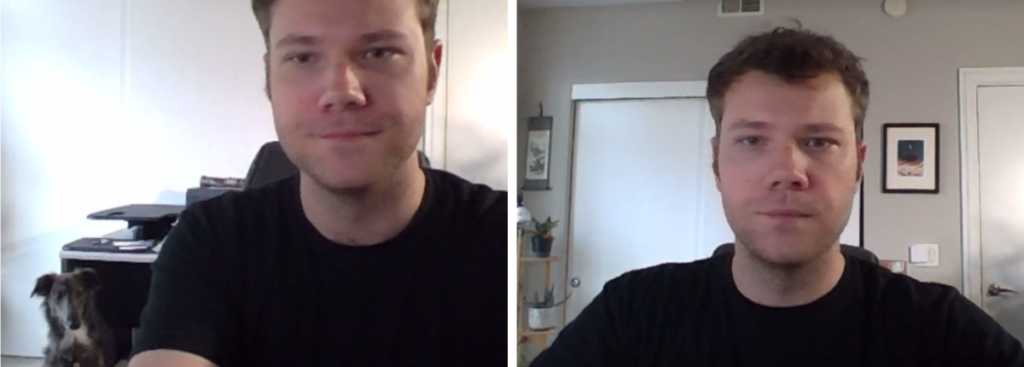Explore our 2024 roundup here.
This post was updated on July 21, 2023 to include more conferences leading into 2024.
As technology continues to evolve and shape the way we work, it’s essential to stay informed on the latest trends and advancements in the world of work. Attending conferences on the future of work can be a valuable investment to meet talented leaders, identify innovative solutions, and in some cases, even showcasing your own! With so many options to choose from in 2023, we are helping you stay ahead of the curve by identifying the top nine future of work conferences you should attend.
February 14-17, 2023 in Ft. Lauderdale, FL
The Future of Work Expo 2023 in Fort Lauderdale is a conference program dedicated to helping companies navigate today’s hybrid workplace. The program will explore the intersection of technology and the human element, providing guidance on how to strike a balance between automation of work and processes and maintaining employee engagement. The conference’s goal is to help attendees reimagine their company’s workplace transformation, including implementing powerful new technologies.
Featuring keynote speakers from top companies such as Dell and EY, attendees will gain insight into how to develop and manage a successful hybrid workplace. At a lower cost than many other conferences, the Future of Work Expo is a great choice for those looking to improve productivity in the ever-evolving workforce and provide a better customer experience.
February 21 – 23, 2023 in NYC and August 8-11, San Diego, CA
Formally known as Future Offices, the WorkX Conference brings together all things related to work experience. The 2023 conference will specifically explore the intersection of the future of work and workplace transformation. By offering two different tracks, attendees can explore content and presentations that are most meaningful to them. While the Future of Work track will examine challenges and issues related to most of the “people” issues, the Workplace Transformation track will look at how organizations are repurposing or utilizing their space to provide the best employee experience.
If you are looking for a multi-track conference opportunity with options to attend on each coast, this could be a great choice for you!
March 7-8, 2023 in San Francisco, CA
SHRM is a leading voice in the HR professional community and continues to shape how employers and employees work together. At SHRMTech, attendees will learn from and engage with HR pioneers and tech innovators who are transforming the world of work. Topics include workplace innovation, future-ready HR, disruptive technologies, ethical AI, and more.
For professionals looking to expand their HR tech knowledge and stay ahead of the curve, this conference will provide learnings, networking opportunities, and outcome-focused practices and solutions. Attendance is expected to be high as this is SHRMTech’s first U.S. event! If you are currently a SHRM credential holder, this event is also a valuable opportunity to earn Professional Development Credits towards your renewal.
March 15, 2023 in London
International Data Corporation (IDC) is a global provider of analysis and insights, helping professionals take a data-driven approach to selecting technologies and formulating business plans. The conference aims to provide attendees with industry insights, recommendations, and valuable experiences from speakers, complete with networking opportunities. The main topics discussed will include ESG targets, democratized innovation, employee performance, and employee retention.
With a focus on data gathered from IDC’s Future of Work European Employee Survey, this conference focuses on why work is changing, from a data-driven perspective, highly focused on European trends.
May 2-4, 2023 in NYC
Each year, the newsroom at the Wall Street Journal identifies who and what is changing the future to compile their Future of Everything conference. While the conference isn’t solely focused on the future of work, given the influx of news on the topic, there are dedicated sections for both technology and work.
Hear from featured speaker T.S. Anil, CEO of Monzo, a British online bank, as he breaks down why company culture matters as much as the bottom line and what Monzo’s recent U.S. launch means for the future of online banking.
With a broader focus than other conferences listed, attendees will be able to receive a birds-eye view of, quite literally, the future of everything.
May 10-12, 2023 in Austin, TX
The Reworked CONNECT conference is produced by Simpler Media Group, the parent brand of the Reworked and CMSWire professional communities. As a result, this conference is highly focused on employee experience and workplace leadership. Attendees will have the opportunity to see inside today’s most productive workplaces and make new connections within the Reworked community.
The conference features five different tracks:
- Leadership & the Modern Organization
- Employee Experience: Design, Build, Listen & Optimize
- The Digital Workplace: Intranets, Collaboration & Killer Apps
- Future of Work: Intelligence, Automation & Virtual
- Talent Development & Enterprise Learning
The array of tracks is perfect for mid-to-senior level employees to learn how to better adapt employee experiences within their organization.
May 15-16, 2023 in London, June 12-13, 2023 in San Diego, CA, and August 29-30, 2023 in Tokyo, Japan
The Gartner Digital Workplace Summit focuses on two digital workplace trends: distributing work and enhancing the digital employee experience. The conference provides an ideal mix of insights and research-based talks to allow participants to better understand these topics and find strategies to improve their outcomes.
Attendees have the options to choose from four different tracks:
- Lead and Execute a Digital Workplace Strategy
- Optimize Technology to Get Work Done
- Construct Solid Infrastructure and Operations Foundations
- Power a Connected Digital Employee Experience
If you are an IT executive or digital workplace leader, this conference is for you! With three locations and multiple tracks to choose from, this summit will allow attendees to join peers to build their network, learn, and meet experts in the digital workplace.
June 6-7, 2023 in Chicago, IL
The Future of Work USA event launched in 2019 with the goal of focusing on the latest trends and strategies surrounding senior executives. With a smaller focus on tech, the Future of Work conference is perfect for those within the HR, communication, or employee experience realm of business. Future of Work will also host conferences in Canada, APAC, Europe throughout 2023. Attendees will have the opportunity to view panels and presentations, network, and participate in discussion groups.
Attendees of Future of Work USA will receive great value at a competitive price, with speakers from top companies such as Coca-Cola, BP, Starbucks, and Walmart.
June 8, 2023 in NYC
The Forbes Future of Work Summit, hosted both in-person and virtually, centers around how to manage an increasingly distributed workforce, offering solutions for a more sustainable, profitable, and inclusive way of working.
Recently, Forbes has begun to highlight executives, organizations, and thought leaders shaping the office of tomorrow in an annual Forbes Future of Work 50 list. Expect some of these top contributors to be involved in this year’s summit.
While the agenda and speakers have not yet been announced for the 2023 summit, interested attendees can take a look at the 2022 agenda, speakers, and sponsors to get a better idea of the conference offerings and key findings.
Whether you have already embraced flexible workplaces, or you need a bit more convincing, these nine conferences are sure to provide expert insight on the future of work and help you stay ahead of the competition.
September 30, 2023 – Virtual
CIO’s Future of Work Summit will focus on sharing expert tips for managing a remote workforce and maintaining top talent amid a rapidly changing landscape.
Previous topics from their February summit touched on:
- How to retain valuable team members is the face of rising inflation
- How to approach and discuss employee monitoring
- Ways to maximize the benefits of in-office collaboration time
- The best and latest collaboration tools
If you are a CIO or innovative leader, you won’t be disappointed by joining this virtual summit. Previous summits have featured top leaders from Forbes, Adobe, Qualtrics, Zscaler, and more.
February 14-15, 2024 in Fort Lauderdale, FL
Get ready for an electrifying glimpse into the future of work! The Future of Work Expo is where cutting-edge technologies, employee experiences, and ground-breaking ideas collide. This Future of Work Expo is all about empowering technology leaders, influencers, and decision-makers with game-changing strategies to maximize workplace productivity and help them to keep delivering an amazing customer experiences.
With networking events, giveaways, and an onsite start up pitch showcase, there is no shortage of exciting opportunities to interact with the leaders and future change-makers across the technology industry.
March 18-19 2024 in Grapevine, TX
The Gartner Digital Workplace Summit is centered around the new and significant challenges that have evolved out of the changing work landscape. The summit’s goal is to provide workplace leaders with the tools and support as they navigate redefining their workplace culture, connectivity, and creativity in the here-to-stay world of hybrid and remote work.
At their previous summit these were the top discussion and presentation points where leaders learned how to:
- Create a Digital Employee Experience
- Champion Digital Skills
- Connect Everything to Value
- Develop Workforce Digital Dexterity
- Focus on talent to drive the Future of Work
Previously, the conference has offered a variety of different tracks based on attendee interests and roles in their respective organizations.
The Future of Software in the Evolving Workplace
The flexible workspace will continue to be an important driver of employee satisfaction and productivity. In order to ensure success, it is essential that the software organizations use enables both remote and hybrid models.
While some executives are set on returning to the office, the reasons they’ve given for their push may not be backed by data. Developed to help with the needs of modern remote work, MultiShare offers remote and distributed teams the long-desired ability to share their screens simultaneously in a Microsoft Teams call. Discover more about what your team can do in Frameable Spaces and advance into the future of work today.






















